A thriving vegetable garden isn’t just about growing the perfect tomatoes, lettuce, or peppers. The right flowers can make a big difference in boosting growth, deterring pests, attracting helpful pollinators, and adding beauty to your garden. Companion planting, which is growing flowers alongside your vegetables, combines both form and function to help your plants thrive naturally.
Here’s a guide to the best flowers to plant near your vegetable garden, why they work, and how to make the most of them.
1. Marigolds – The Garden Guardian
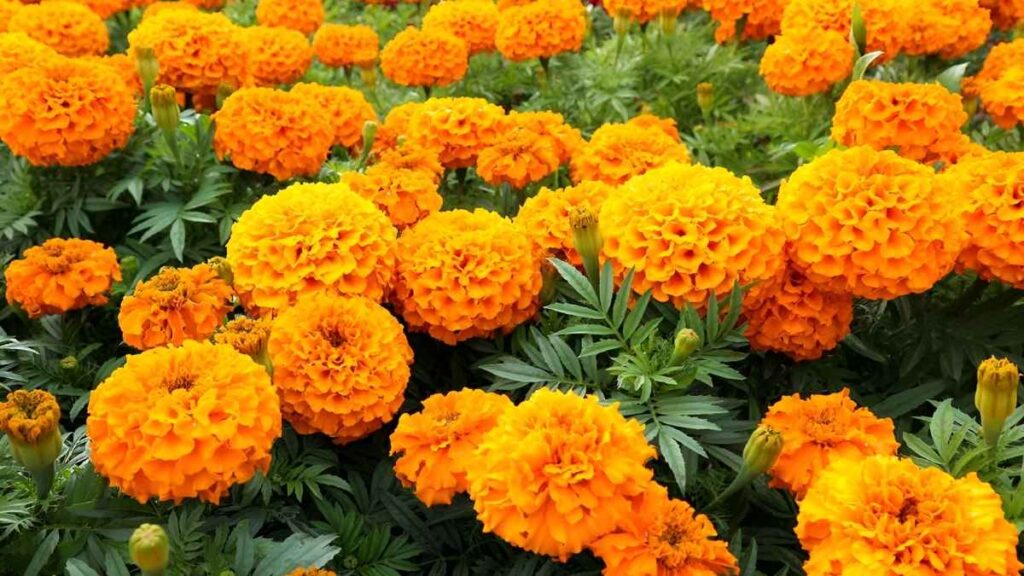
Why they work:
Marigolds are well-known for repelling pests like aphids, nematodes, and certain insects that target tomatoes, peppers, and beans. Their strong scent confuses harmful pests and attracts helpful insects like ladybugs, hoverflies, and bees.
Best pairings:
- Tomatoes
- Peppers
- Beans
- Cucumbers
Planting tips:
- Plant marigolds around the edges of your vegetable beds.
- Choose French marigolds for smaller gardens, or African marigolds for taller borders.
- Deadhead (remove spent blooms) to encourage continuous flowering and keep pests away.
2. Nasturtiums – The Edible Trap Crop
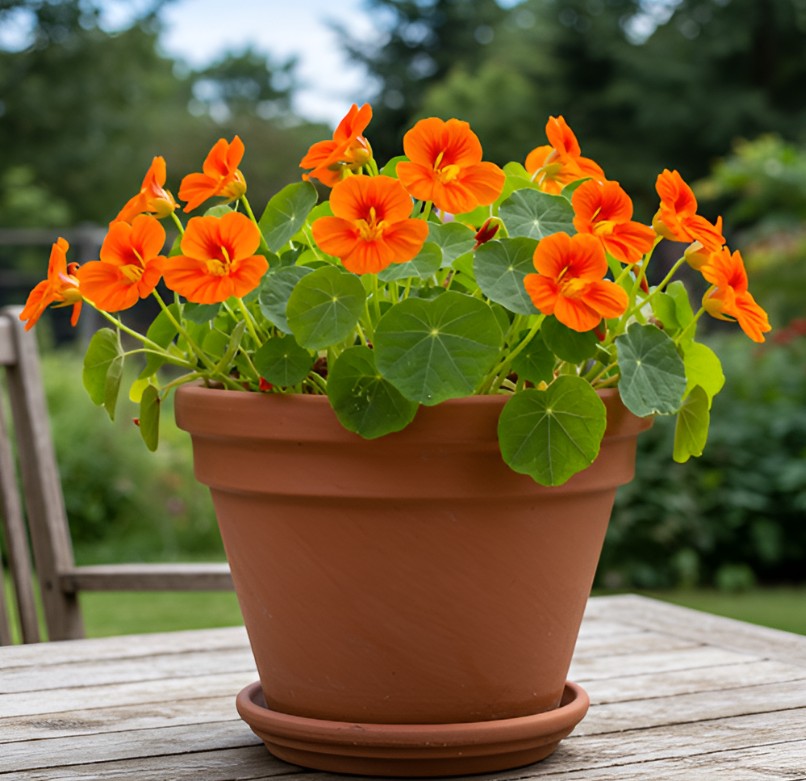
Why they work:
Nasturtiums act as a “trap crop,” luring aphids and whiteflies away from your vegetables. Their bright flowers also attract pollinators like bees, boosting your vegetable yields.
Best pairings:
- Tomatoes
- Cabbage
- Radishes
- Cucumbers
Planting tips:
- Plant them along vegetable edges or mix them within your crops.
- Nasturtiums grow well in poor soil and need little care.
- Their trailing varieties can also serve as ground cover to help control weeds.
3. Sunflowers – Pollinator Magnets and Natural Supports
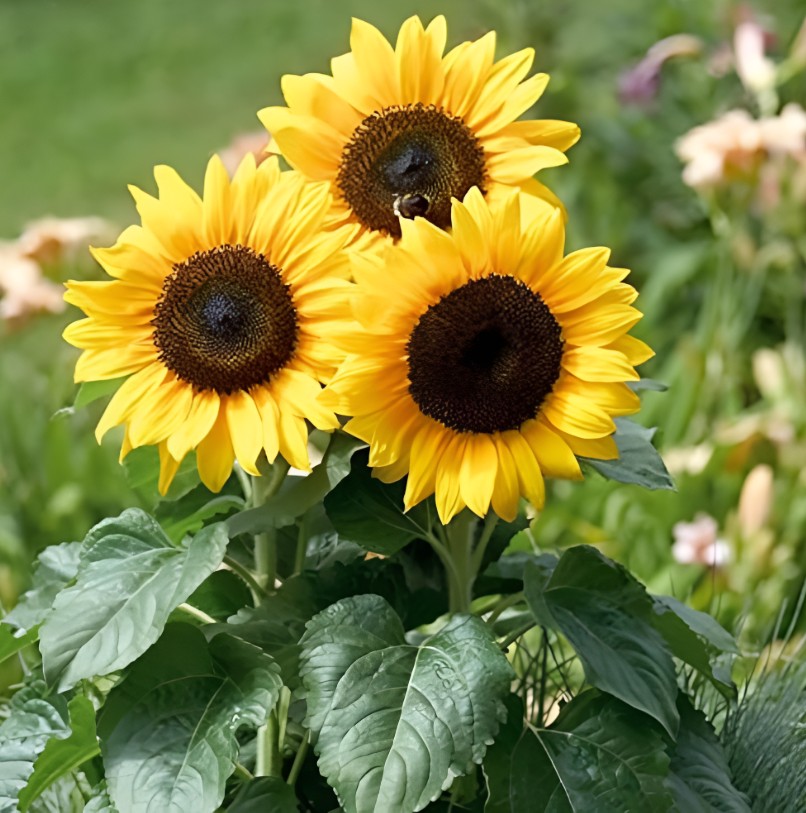
Why they work:
Sunflowers are fantastic for attracting bees and other pollinators, which are essential for fruiting vegetables like tomatoes, squash, and beans. Tall sunflowers can even support climbing plants like pole beans.
Best pairings:
- Pole beans
- Cucumbers
- Squash
Planting tips:
- Plant sunflowers on the south side of your garden to prevent them from shading other crops.
- Choose sturdy, disease-resistant varieties if you plan to use them for support.
- Space sunflowers properly to allow air circulation and avoid fungal issues.
4. Calendula – The Continuous Bloomer
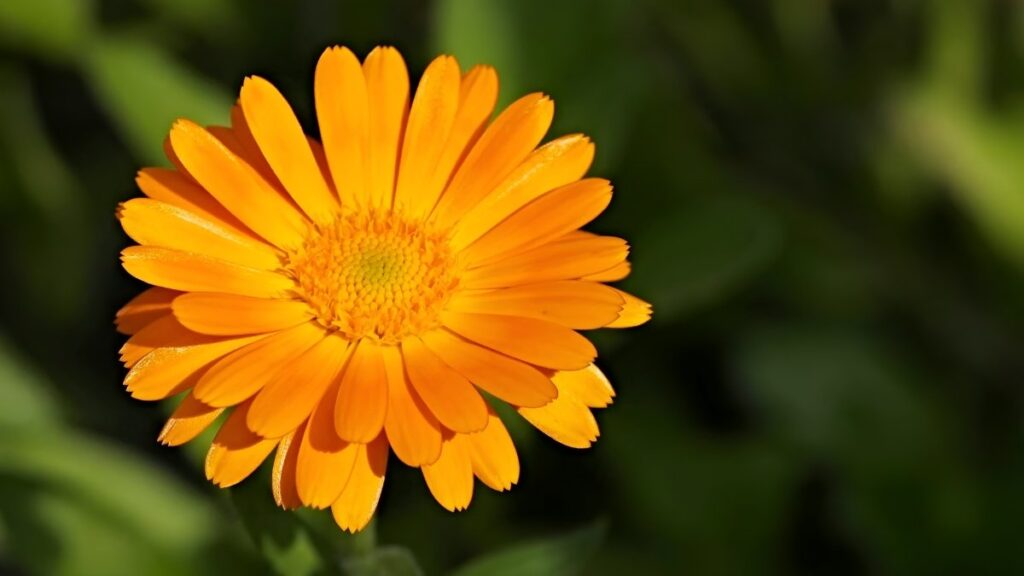
Why they work:
Calendulas, or pot marigolds, attract beneficial insects like lacewings, parasitic wasps, and bees, which help control pests. Calendulas bloom almost all season long, providing natural pest control and even edible petals.
Best pairings:
- Lettuce
- Carrots
- Tomatoes
- Brassicas (broccoli, kale, cauliflower)
Planting tips:
- Plant seeds directly in the garden, or start indoors for early blooms.
- Deadhead regularly to keep the flowers coming.
- Calendulas love full sun but can tolerate some shade.
5. Borage – The Mineral Booster
Why they work:
Borage is rich in nectar, attracting bees that improve pollination for vegetables like tomatoes, squash, and cucumbers. Borage also improves soil health, adding valuable minerals, especially potassium, which benefits nearby crops.
Best pairings:
- Tomatoes
- Squash
- Strawberries
Planting tips:
- Sow borage seeds directly in the soil after the last frost.
- Borage grows quickly and can self-seed, so remove excess plants to avoid overcrowding.
- Use borage as a border or interplant it with your vegetables.
6. Lavender – The Fragrant Pest Deterrent
Why they work:
Lavender’s strong scent repels pests like moths and flies, while attracting pollinators such as bees and butterflies. Its woody stems also provide structure and visual appeal next to your vegetable beds.
Best pairings:
- Cabbage family crops (broccoli, kale, cauliflower)
- Tomatoes
- Peppers
Planting tips:
- Lavender thrives in full sun and well-drained soil.
- Prune lightly after flowering to keep it neat.
- Plant lavender along the edges of your vegetable beds for maximum pest control.
7. Zinnias – Pollinator Powerhouses
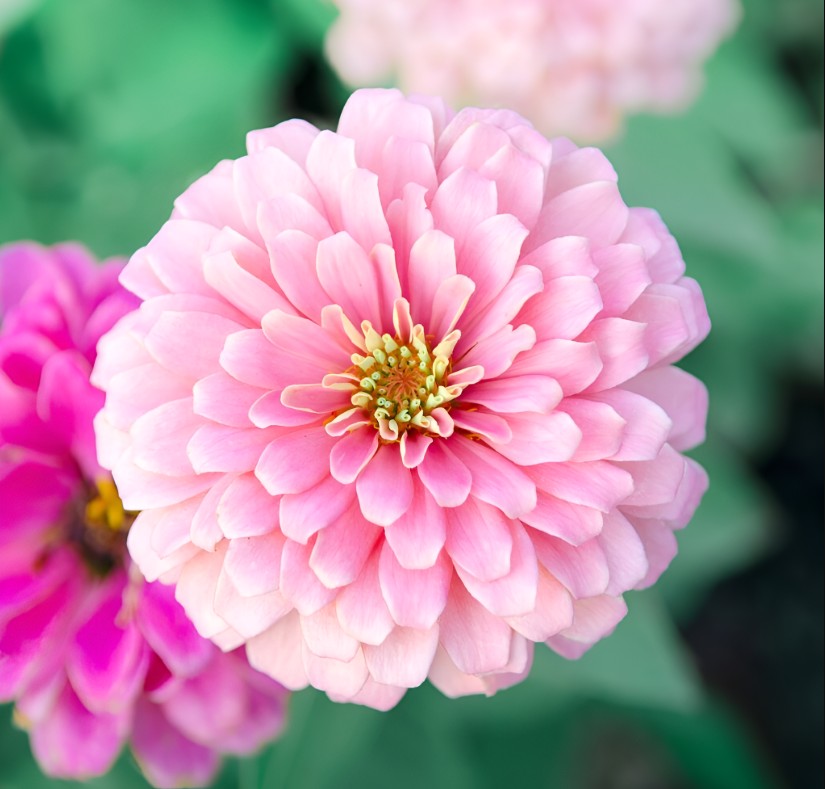
Why they work:
Zinnias bloom in bright, vibrant colors and attract bees, butterflies, and hummingbirds, all of which help pollinate your vegetables. They’re drought-tolerant and bloom all season, providing a constant source of food for beneficial insects.
Best pairings:
- Tomatoes
- Peppers
- Squash
Planting tips:
- Choose single-flowered varieties for easy pollinator access.
- Plant zinnias in clusters or along the garden edge to make the most of their beauty and attract pollinators.
- Deadhead regularly to extend their blooming season.
8. Sun-Loving Herbs with Flowers
Many herbs that produce flowers also make great companions for vegetables. Here are a few to consider:
- Basil: Repels mosquitoes and flies, attracts bees. Perfect with tomatoes.
- Chives: Their flowers attract pollinators and deter aphids. Works well with carrots and tomatoes.
- Thyme: Attracts bees and predatory insects. It can also act as ground cover to suppress weeds.
Plant these herbs near your vegetables for both culinary benefits and added pollination.
9. How Flower Placement Improves Vegetable Health
- Pollination: Flowers draw in bees, butterflies, and other pollinators, increasing fruit set for vegetables like tomatoes, cucumbers, and peppers.
- Pest control: Some flowers attract beneficial insects that prey on common pests, while others confuse or repel harmful ones.
- Biodiversity: A diverse garden helps reduce the risk of pest outbreaks and diseases.
- Soil health: Flowers like borage have deep roots that break up compacted soil, allowing nutrients to flow more easily to nearby plants.
Pro tip: Plant flowers in clusters, not randomly, to make it easier for pollinators and beneficial insects to find them.
10. Seasonal Flower Planning
To enjoy flower benefits year-round, stagger your plantings through the seasons:
- Spring: Calendula, nasturtium, and borage for early pollinators.
- Summer: Marigolds, sunflowers, zinnias, and lavender to support peak vegetable growth.
- Fall: Late-blooming asters or cosmos to keep attracting pollinators as the season winds down.
Rotating flowers with vegetables ensures that you have constant blooms, pest protection, and pollinator visits throughout the growing season.
Final Thoughts
Planting flowers near your vegetable garden isn’t just about decoration—it’s a smart strategy to boost yield, attract beneficial insects, and control pests naturally. From marigolds that guard against insects to sunflowers that provide support and attract bees, these companion flowers create a healthy and vibrant garden environment. By thoughtfully combining flowers with your vegetables, you’ll enjoy not just better crops, but a more beautiful, buzzing, and productive garden.




